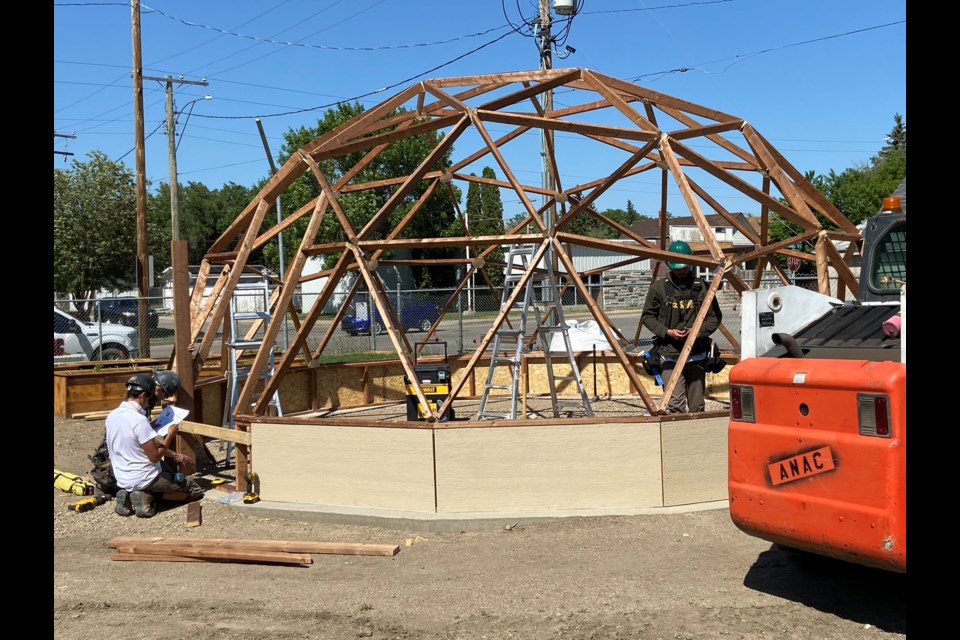Prince Arthur Community School is building a neighbourhood garden and greenhouse on school grounds to ensure students and area residents have a secure food source for the future.
The school has been working on the community garden and geodesic-domed greenhouse for several months, with many community businesses and organizations contributing time, energy and resources for free to help the project come to fruition. Residents passing by have likely seen the skeletal frame of the greenhouse, which All ‘n’ All Construction helped build.
“Construction is going really well,” vice-principal Brad Raes said recently. The school is waiting for the arrival of the correct panels for the greenhouse — the wrong size was shipped — so it can finish the structure and start planting inside.
While waiting for the panels to arrive, the school is moving forward by finishing the community garden and adding mulch to the growing areas. In addition, every food forest guild plot has been installed with an automated watering system, while fruit trees have been planted in each plot.
The hope is to use the garden this summer and finish the greenhouse — built for Northern Canada — in the fall, allowing the school to grow food year-round and use every harvested item from both areas for the breakfast and lunch programs, said Raes.
School administration spoke with students and staff about taking on this initiative, with many saying having an outdoor garden would be a great idea, he noted. The school was able to pursue this project by acquiring a Co-op community grant via the Co-op’s community spaces program.
The Moose Jaw River Watershed Stewards is the lead organization helping to install this organic urban food forest and garden; one of its members sits on the school community council and helped acquire the grant funding.
“The garden and the greenhouse are one big project. (We want to) kind of blend learning with community and hopefully bring some people in and help us run the garden and work with kids … ,” Raes said, adding he was thankful for the “tremendous amount of donations” that residents and businesses contributed since this would have been a costly project without that support.
The food farm will teach students, the community and visitors about food-related resiliency concepts for climate change, which is important since temperatures are increasing and water resources are being strained, the Moose Jaw River Watershed Stewards said.
The food farm will teach sustainability concepts such as:
- Promoting biodiversity by creating habitats for pollinators, bat, and bird
- Promoting water conservation by using rain barrels to capture water
- Planting low maintenance self-sustaining food forest guilds that mimic natural forest ecosystems
- Using recycled materials to build the food farm, including recycled wood for the garden boxes
- Using compost, worm casings and natural fertilizers to feed the gardens, including bat guano
- Planting native plant species to promote drought tolerance
Another goal the school has is to form a community association so area residents can have their food plots and care for them over the summer. Students have been doing plenty of planting and landscaping already, which Raes sees as important, so they take ownership of the project.
Raes was excited with the number of residents driving by and stopping to ask questions about the project, including the greenhouse, which is special since there are only a few similar structures in Saskatchewan. That interest is important since the school has wanted more community involvement for many years.
“I think this could be a really good step in that direction,” he added.




